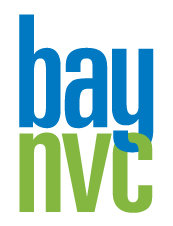At first, the numbers were clear to me. There was the 1% of the population, and there were the 99%. The division was based on income and on assets. The 1% made 20.3% of the income in 2006, averaging $1,243,516. They owned 34.6% of total assets in 2007 and 42.7% of total financial assets. The 99% was everyone else. This picture, upsetting as it is, made some sense to me.
Then it got muddied.
Because the bottom salary of the 1% starts at $382,593. So, doesn’t that mean that some of the 99% actually make an extremely comfortable income. Then are they still part of the 99%? Hmmm… Something in that picture doesn’t quite capture the depth of an experience of injustice and powerlessness that I read into the expression “We are the 99%.” So what to do? Is it really 99%, or is it only 90%?
I looked at the numbers again, that still didn’t make sense. Within the 90%, some people are still making up to $104,696, and they are not generally the people who suffer the more acute forms of indignities and structural violence. That’s when I started realizing that about 20% are sort-of-part-of-the-99%-and-sort-of-not.
That wasn’t the end of it, either, even though we are already at about 120%.
Because just as much as I don’t believe that people who make $382,593 are part of the injustice being spoken about, I also don’t believe that they are the ones with the true power to make or break policy decisions. Maybe it’s only the 0.01% that are really the 1%? This small group of people makes an income that’s 389 times their percentage of the population. The 1%, on the other hand, make “only” 20.3 times of their percentage. I am convinced there is even a smaller group of people who make an even higher proportion of the income, and I don’t even know how to find those numbers. How small is the “true” 1%, then?
So far, I am at least at 123%. And this is still not the end.
Because we also have the police. Considering their salaries, almost all of the police are clearly part of the 99%. Considering how some people in the Occupy movement are responding to the police, they are not. If they are not, then, once again, we have a group that doesn’t neatly fit the sharp division of 99% and 1%, increasing our total numbers beyond 123%. And what about city workers? Where do they fit? How many of us will there be in the end?
I think of this issue as a profound tragedy. One of the ways that nonviolent movements have traditionally worked is by undermining the sources of support of existing regimes, including by encouraging and nurturing defections. When the police or army can no longer be counted on by a regime, its final legitimacy is finished. This is the kind of situation that leads dictators to abdicate their power. In the structure of how the Occupy movement has been working, such a path is not available. With the police being demonized and, in some locales, physically challenged, how would police officers find their way out of where they are? What alternatives are being offered them to the grueling and difficult situation in which they find themselves? Precisely because they are part of the symbolic meaning of 99%, they are tethered to their jobs, and that means following orders that could be out of integrity for them. Could we generate enough love and an invitation to look at our shared struggles instead of animosity?
Ultimately, I am aiming for a world that works for all of us, all 100% (or more) of us, wherever we are. I don’t have any willingness to create throw-away people, either physically or morally. The biggest transformation I aim for is to transcend either/or categories of any kind, any shred of any idea that some of us have to lose in order for things to work for some others, whether it’s 1%, 99%, or even 0.01% who lose. It’s entirely possible for 100% of us to work together for the benefit of 100% of us. It is only together that we can partake of and steward the bounty of life and our precious planet. I believe it’s still possible.

